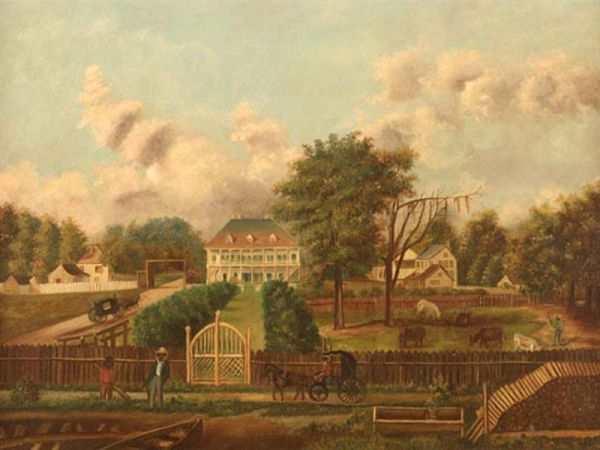Southern society in the early to mid-19th Century was centered around land, status, and tradition. A small group of wealthy plantation owners sat at the top. Their power rested on large estates, political influence, and control of local life. Most white Southerners were not a part of the planter class. Many were yeoman farmers who worked smaller plots. This created a steep social ladder with a narrow upper level and many people below it.
Plantations were centers of both business and social life. Owners directed planting schedules, took care of finances, and arranged tasks to keep the estate going. They used overseers and enslaved workers to keep buildings up, care for animals, and make everyday goods. Because plantations were spread far apart, even wealthy families often felt isolated. Formal visits, church gatherings, and seasonal celebrations helped them stay connected and maintain their standing in the community.
Customs shaped everyday behavior. Honor and reputation mattered. Manners, hospitality, and public displays of generosity showed one’s place in the community. Religion added to this culture. During the Second Great Awakening, revivals and church membership both grew. Sunday services and church socials were important for bringing people together. They helped community members make decisions and strengthen their shared values.

Education reflected class lines. Few public schools existed. Travel was difficult, and towns were small, so wealthy families often hired private tutors. Boys usually studied during cooler months. This way, they could work in the fields during planting season. Girls often studied during the warmer months and practiced skills related to household management. In cities, there were some academies, but access still favored the elite.
Expectations for men and women also marked social rank. Men represented the household in public life. They voted, ran businesses, and guarded family honor. Women supervised the home. They organized food stores, clothing, and care for children and guests. When husbands traveled, many wives managed the accounts and ran daily tasks. These duties were seen as proof of refinement and responsibility within the accepted order.
The wealth of the plantation class depended on cash crops, especially cotton. Enslaved labor made the system profitable. This profit boosted the planters' status as community leaders. By the mid-1800s, Southern identity mixed farming, a strict social order, and customes. This mix created a unique culture that valued land, honor, and tradition.
